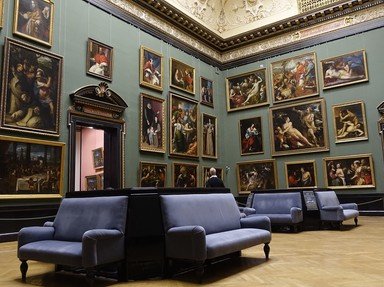Quiz Answer Key and Fun Facts
1. "Sunflowers" (1888) by Vincent van Gogh.
Although Van Gogh painted 2 series of paintings of sunflowers, perhaps the most recognisable, yellow hued version resides in London. In which famous gallery would you find it?
2. Although this gallery does not hold permanent exhibitions, it has, over the years, housed some of the most contemporary and most controversial works of art produced in the twenty-first century. Damien Hirst's "The Physical Impossibility of Death in the Mind of Someone Living" was first exhibited here in 1992. Which gallery was this?
3. John Constable's "Flatford Mill (Scene on a Navigable River)" (1816).
In which London gallery would you find this iconic painting?
4. One of London's art galleries has a yearly tradition of commissioning internationally acclaimed artists to design a temporary pavilion for its lawn. In 2012, the pavilion was designed by Ai Weiwei and Herzog & de Meuron.
Which gallery is this?
5. In January 2013, the first official portrait of HRH Duchess of Cambridge was unveiled. It was painted by controversial artist Paul Emsley.
In which London gallery was this portrait unveiled and subsequently housed?
6. "The Swimming Reindeer" is a 13,000 year old sculpture carved from the tip of a mammoth's tusk. Although it was found in France, it is housed in London. Where would you find this early sculpture?
7. "A fly on sugar crystals" (2010) by Dave McCarthy and Annie Cavanagh.
In which London museum would you find this work of art?
8. "Gassed" (1919) by John Singer Sargent.
Where is the London home of this painting?
9. "Jacob de Gheyn III" (1632) by Rembrandt is one of the most stolen and recovered pieces of artwork in the world. Most recently it was stolen in 1983 and recovered soon after.
Where would you find this portrait in London?
10. "The Lady With A Fan" (c.1638) by Diego Velázquez.
Where would you find this painting in London?
Source: Author
suzidunc
This quiz was reviewed by FunTrivia editor
looney_tunes before going online.
Any errors found in FunTrivia content are routinely corrected through our feedback system.
